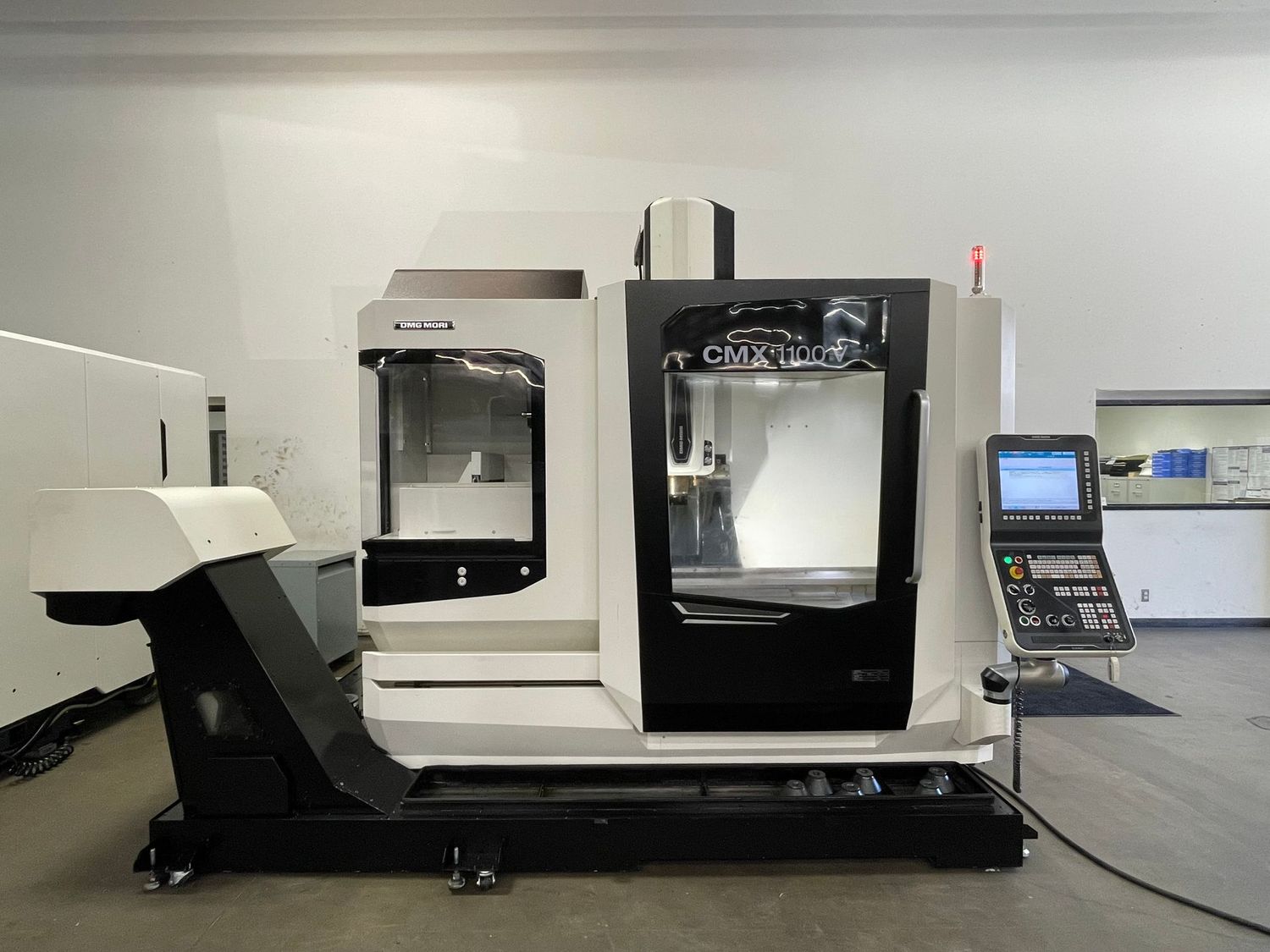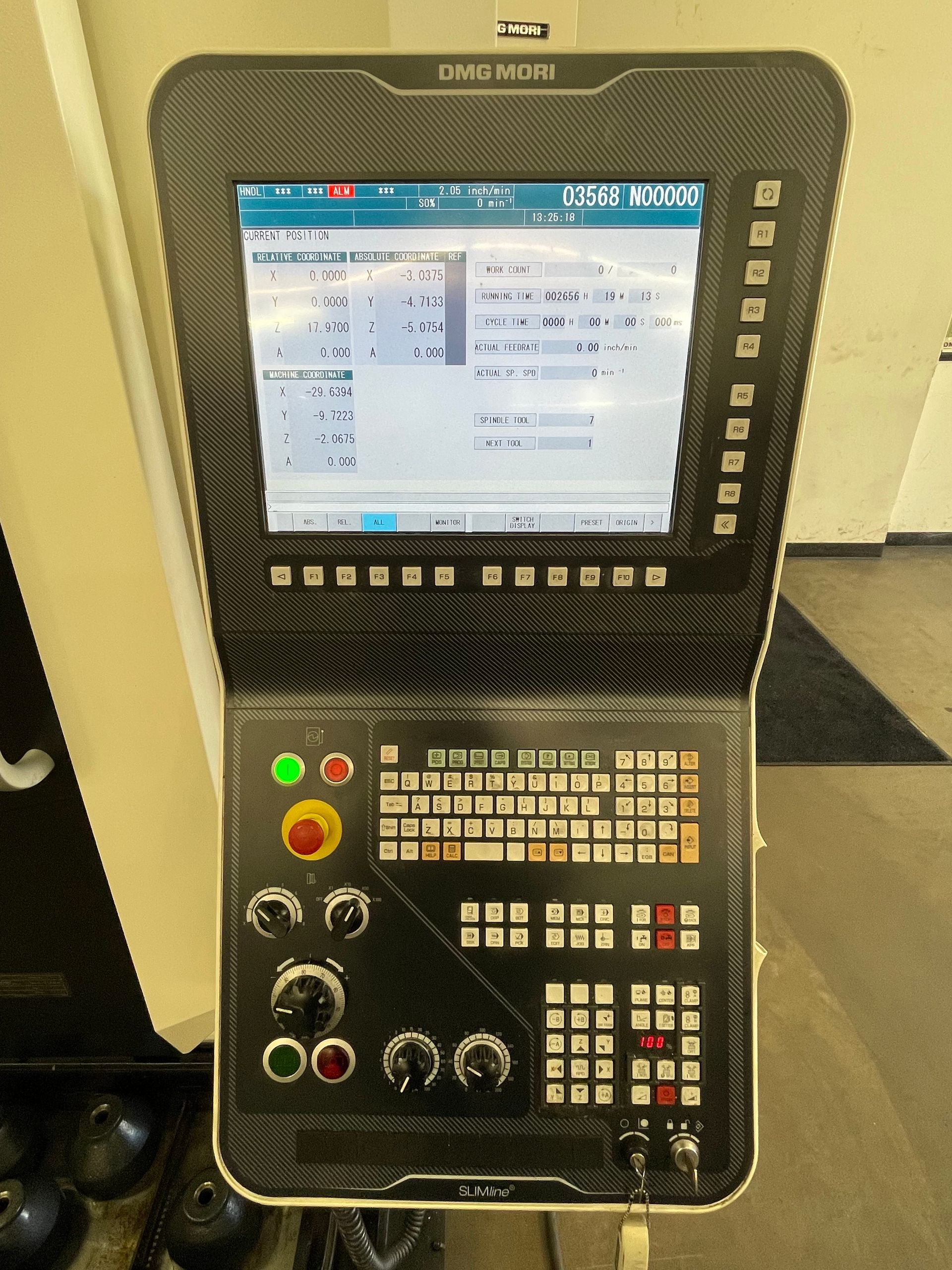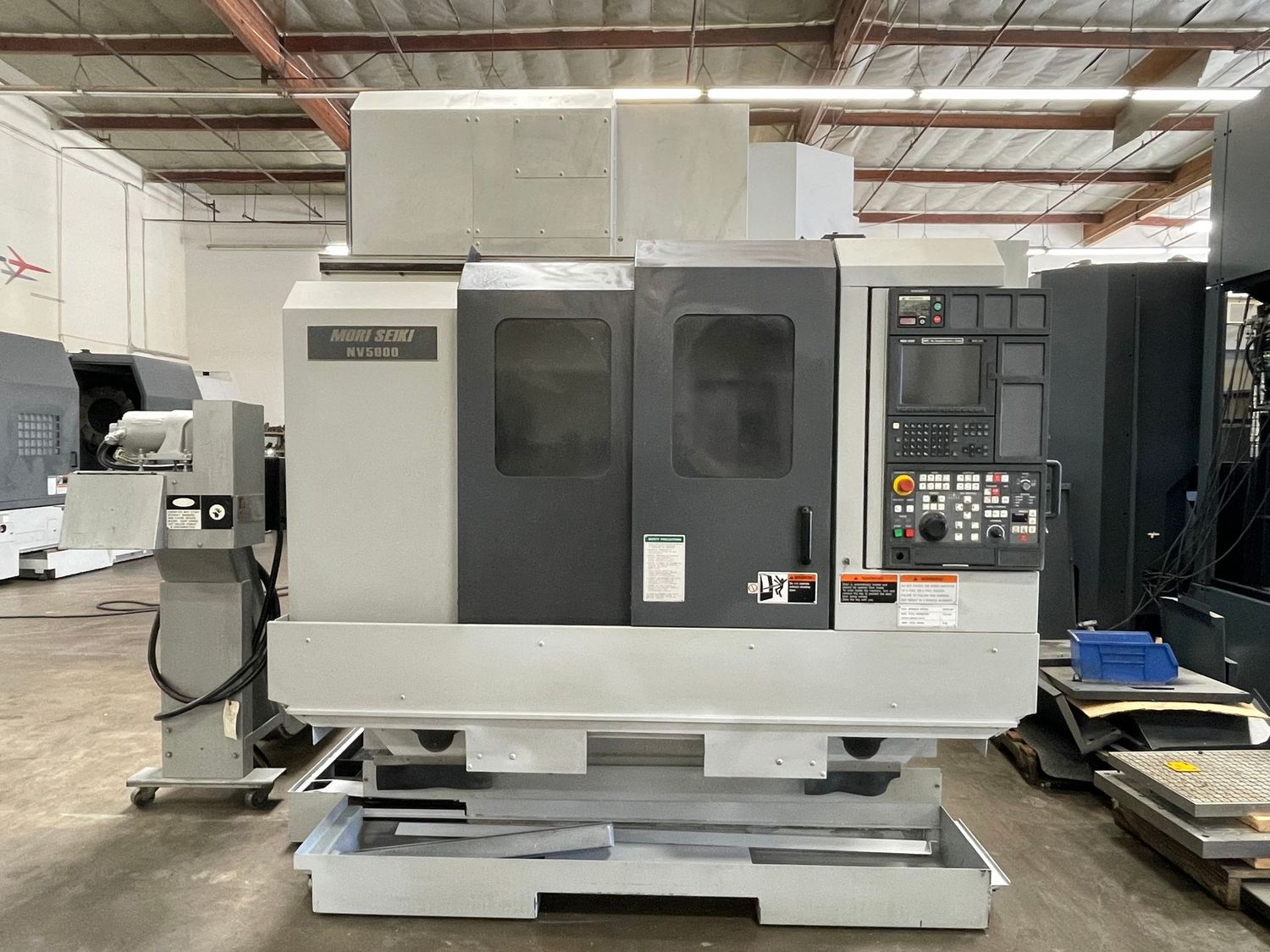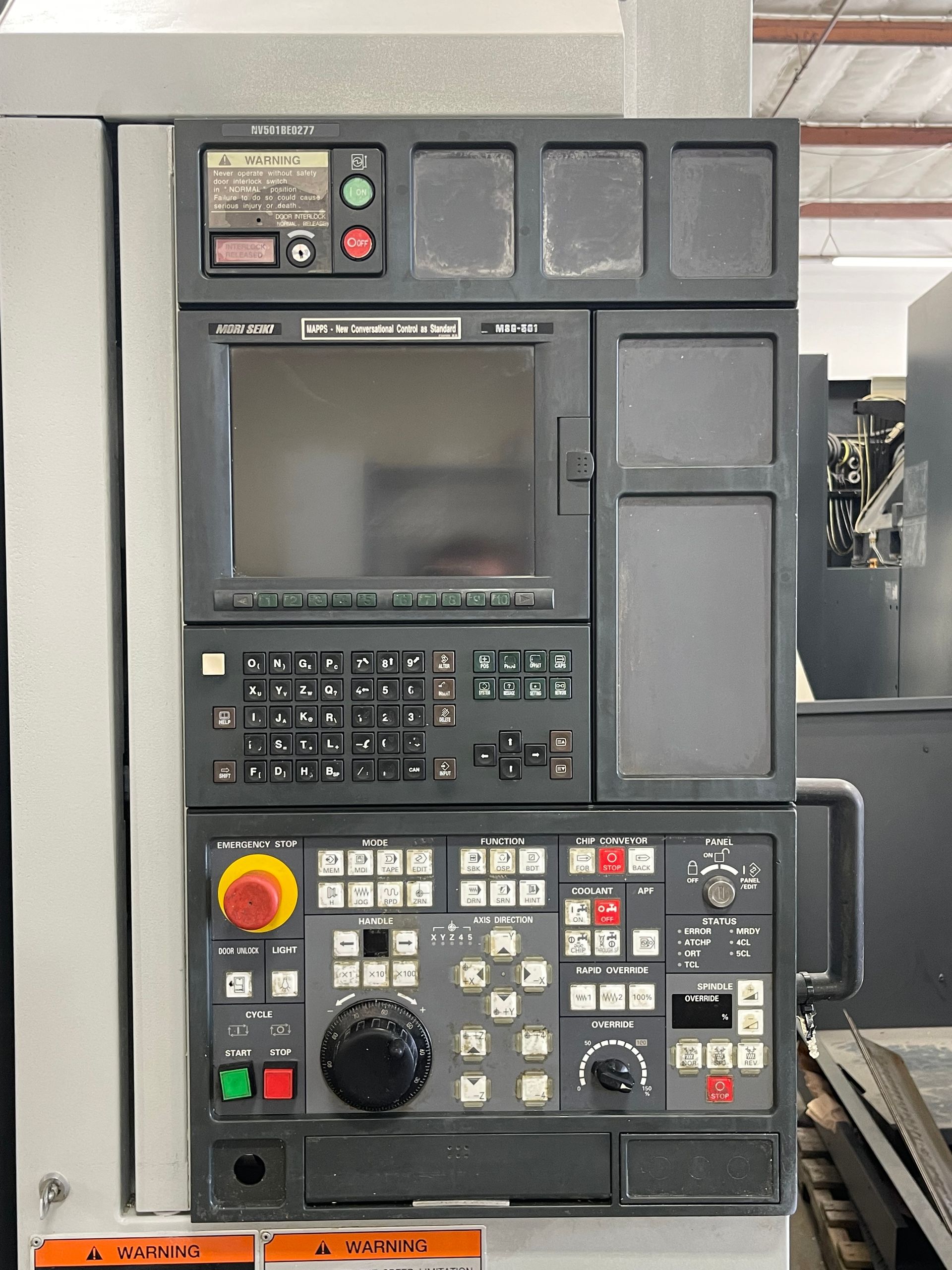Article
DMG MORI / Mori Seiki: A Brief History—and Why These Machines Dominate the Used Market
If you’re shopping for a used Mori Seiki or used DMG MORI machine, you already know the reputation: lights-out reliability, tight tolerances, and model families that cover everything from high-volume turning to complex 5-axis work. This guide gives you a quick history of the brand, a plain-English buying roadmap, and why Protech Machine Tool Sales is the best place to source, inspect, and support your next machine.
From Mori Seiki to DMG MORI: How We Got Here
- Mori Seiki (Japan) was founded in 1948, originally making textile equipment before shifting to machine tools and the NC/CNC era.
- Gildemeister (Germany) traces back to 1870; over time it became the DMG brand you saw on European mills and turn-mill centers.
- In 2009, Mori Seiki and Gildemeister announced a strategic cooperation, pooling sales, service, and technology. By 2013, both companies aligned names under DMG MORI, and in 2015 the unified DMG MORI brand rolled out globally.
- The company’s modern UI/NC stack, CELOS, sits over controls like SIEMENS and HEIDENHAIN (and on Mori legacy lines, MAPPS).
- In 2015, DMG MORI also took over AMADA’s Wasino lathe business, folding compact, high-precision production lathes into its portfolio.
What that means for buyers: whether a machine is labeled Mori Seiki, DMG, or DMG MORI, you’re shopping a continuous lineage with shared engineering DNA and a deep parts/service ecosystem.
Why Used DMG MORI Machines Hold Value
- Rigid iron + smart control ecosystems. From classic Mori Seiki NL/NLX lathes to DMG DMU 5-axis centers, the brand is known for rigidity, thermal stability, and strong servo performance—key to finishes and tool life.
- Broad model families = easy right-sizing. You can spec for bar capacity, Y-axis/live tool needs, palletization, or simultaneous 5-axis without jumping brands.
- Supportability. Large installed base and global service coverage means parts, manuals, and know-how are findable—critical for used buyers.
Model Family Cheat Sheet (Great for SEO and fast scoping)
Mori Seiki / DMG MORI Turning (2-axis, Y-axis, sub-spindle, mill-turn)
- SL / ZL (legacy) – classic two-axis workhorses (think job-shop staples)
- NL / NLX – high-rigidity lathes; many with Y-axis and sub-spindle options
- NT / NTX – true mill-turn platforms with B-axis milling capability for complete machining
- Wasino (integrated 2015) – compact, production lathes for automotive/optics lines
Vertical & Horizontal Machining
- NV / NVX – vertical machining centers (VMC) with strong accuracy/thermal concepts
- NH / NHX – horizontal machining centers (HMC); palletized, high-uptime platforms
5-Axis / Universal / Mill-Turn Centers
- DMU (e.g., DMU 50, DMU 65) – versatile 5-axis universal mills, shop-friendly footprint
- DMC / Portal – large travels, gantry/portal architecture for big workpieces
- CTX – turn-mill series under the DMG banner; pairs well with bar feeders/gantries
What to Check When Buying a Used DMG MORI / Mori Seiki
1) Spindle health & cutting demo
- Warm up the spindle, check bearing noise across the curve, inspect runout, and verify power draw under a loaded cut.
2) Linear axes & ways
- Ball screw backlash and repeatability (laser or ball-bar data if available).
- Look for Turcite wear patterns, axis noise, and scale feedback consistency.
3) Kinematics (for 5-axis / B-axis / mill-turn)
- Verify B-axis clamping torque, C-axis indexing accuracy, and rotary wobble.
- Run a 5-axis cone-frustum or NAS 979-style test cut if possible.
4) Turret & toolchanger
- On lathes: turret indexing speed/accuracy, live tool spindle play, channel alarms.
- On mills: ATC cycle consistency and pocket mapping (no ghost pockets, no slow pockets).
5) Control & software
- Confirm control version: MAPPS (often Fanuc-based HMIs on Mori heritage) vs CELOS (front-end UI over Siemens/Heidenhain). If you need probing, tool life, or DNC specifics, verify the software options are licensed on that machine.
6) Automation readiness
- For HMCs: pallet system health, pallet changer timing, encoder homing reliability.
- For lathes: bar feeder integration, parts catcher, sub-spindle handoff timing.
Quick Sizing Guide (pick your lane fast)
- High-mix job shop, tight tolerance: DMU 50 / DMU 65, NVX 5100, NLX Y-axis
- Automotive/medical production turning: NLX with sub, Wasino production lathes
- Lights-out HMC cells: NHX 4000/5000 with pallets and probing
- One-and-done mill-turn: NTX 2000/2500 with B-axis tooling
- Large 5-axis / mold: DMC / Portal series
Why Protech Machine Tool Sales Is the Smartest Way to Buy Used DMG MORI
Let’s be blunt: paying the cheapest auction price and hoping you got a good spindle is not a strategy. Protech exists to de-risk the purchase and keep your capacity online.
What makes us different (and better):
- Inventory you can trust. We prioritize machines with known service histories, clean alignments, and verifiable spindle hours.
- Power-on inspections & live cuts. We don’t hide behind broker photos. If we list it, we can show it.
- Tooling + turnkey. From workholding, probes, and bar feeders to post-processors and on-site training, we make the machine productive day one.
- Financing & logistics. Pre-approved financing, nationwide rigging, and careful install planning so you’re not paying operators to wait around.
- After-sale support. We help with service contacts, parts sourcing, and troubleshooting to protect your uptime.
Bottom line: Protech Machine Tool Sales turns a used DMG MORI purchase into a predictable, production-ready asset—not a gamble.
Browse Our Current Used DMG MORI & Mori Seiki Inventory
Frequently Asked Questions
Is “Mori Seiki” different from “DMG MORI”?
They’re the same family today. Mori Seiki (Japan) and Gildemeister/DMG (Germany) aligned in 2009, unified branding by 2013–2015, and operate globally as DMG MORI.
Which control should I choose—MAPPS/Fanuc, Siemens, or Heidenhain?
All three are capable.
Fanuc (MAPPS) is familiar in many U.S. shops;
Siemens/Heidenhain shine in 5-axis surfacing and probing workflows. Check post availability and your programmer/operator comfort.
CELOS sits on top to standardize navigation and apps.
What’s a durable “first” Mori Seiki lathe for a job shop?
A clean
NLX 2500 with Y-axis and sub-spindle is a solid, flexible choice: bar work, light mill-turn, and short-cycle production.
What about production turning cells?
Consider
Wasino-line compacts (post-2015 under DMG MORI) or an
NLX with a bar feeder and parts catcher for unattended shifts.
The Shortlist: Buyer Tips You Can Use Today
- Ask for cut data (material, SFM, chip load) from a live demo—not just air cuts.
- Pull diagnostics: axis error logs, spindle temperature curves, and any compensation tables.
- Verify probing & TCP on 5-axis machines (cycle a calibration and a 5-axis test cut).
- Budget for tooling and workholding in the quote—you’ll need it to hit the quoted cycle times.
- Plan the install (power, air, foundations, coolant handling) before the truck shows up.
Ready to Add Capacity?
If you want a used DMG MORI that punches above its weight from day one, talk to Protech Machine Tool Sales. We’ll help you match the right machine to your parts, prove it with a cut, and deliver a clean install.
Next steps:
- Browse inventory → HERE
- Submit a request for our FREE quote
- Get a turnkey quote to your inbox.








